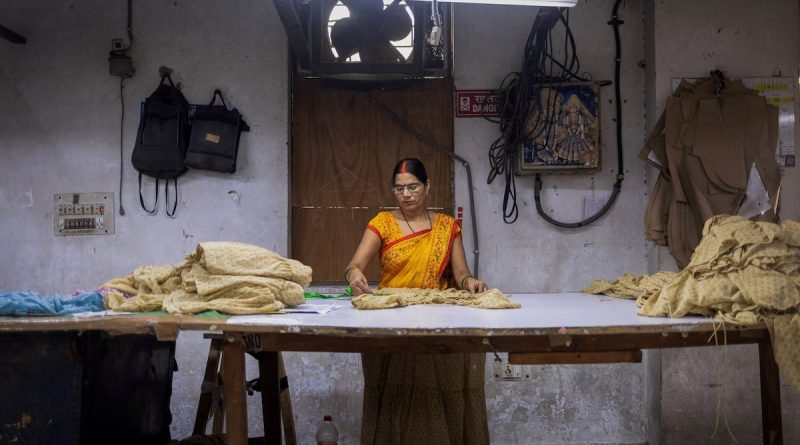India’s Unemployment Rate Drops to 5.2% in September Quarter as Women’s Workforce Participation Grows
New Delhi – India’s economy showed encouraging signs of progress as the unemployment rate dropped to 5.2% in the July–September quarter, compared to 5.4% in the previous quarter.
The improvement was largely driven by higher rural employment during the farming season and a steady increase in female participation across sectors.
According to the Periodic Labour Force Survey (PLFS) released by the Ministry of Statistics, rural areas experienced a notable boost in job creation.
Unemployment among individuals aged 15 and above in rural regions eased to 4.4%, down from 4.8% in the previous quarter, reflecting seasonal agricultural activity and improved labour demand.
Urban unemployment remained nearly steady at 6.9%, compared to 6.8% earlier, showing consistent performance despite global economic challenges.
The survey, which covered over 564,000 people, estimated that India had around 562 million employed persons during this period.
India’s labour force participation rate (LFPR) rose slightly to 55.1% from 55.0% in the previous quarter, signaling gradual but stable workforce engagement.
Encouragingly, female labour participation rose to 33.7% from 33.4%, marking a continued upward trend in women’s involvement in India’s economic growth story.
Experts see this increase as a reflection of government policies encouraging women’s empowerment, skill development, and inclusion in both rural and urban sectors.
However, the data also noted that unemployment among urban women edged up slightly to 9% from 8.9%, indicating room for further policy focus on job stability and equality.
Among men, unemployment remained stable at 6.2%, a minimal change from the previous 6.1%, showcasing a balanced employment environment overall.
The Worker Population Ratio (WPR) — representing the share of employed individuals in the total population — also increased marginally to 52.%, supported by the surge in rural female participation.
Rural employment saw a notable transformation, with the share of self-employed workers rising to 62.8% from 60.7%.
This shift reflects the seasonal rise in agricultural and allied activities that traditionally boost rural livelihoods during the monsoon farming months.
In urban India, regular wage and salaried jobs improved modestly to 49.8%, up from 49.4%, suggesting a slow but steady recovery in formal employment sectors.
Industries such as services, technology, and small-scale enterprises have also begun to rebound, offering greater income stability and long-term job prospects.
The survey further highlighted that 57.7% of rural workers were engaged in agriculture during the quarter, compared to 53.5% previously.
This increase underscores agriculture’s continued role as a vital employment generator in India’s economy.
Meanwhile, urban workers in the tertiary sector — including education, health, retail, and services — saw their share rise to 62%, signaling healthy demand in consumer-oriented and service-based industries. Analysts view these numbers as evidence of a broad-based recovery and India’s resilience amid global economic uncertainty.
With consistent policy focus on skill development, rural employment schemes, and women’s economic participation, India’s labour market continues to show promising momentum.
Experts suggest that sustained reforms and industrial growth could push these employment gains further, reducing job disparities and strengthening inclusive development.
The latest figures reaffirm that India’s economy is moving in a positive direction, supported by an active labour market and the increasing participation of women in the workforce.
As the country continues to invest in human capital and innovation, the foundation for long-term growth and social equality becomes even stronger.



